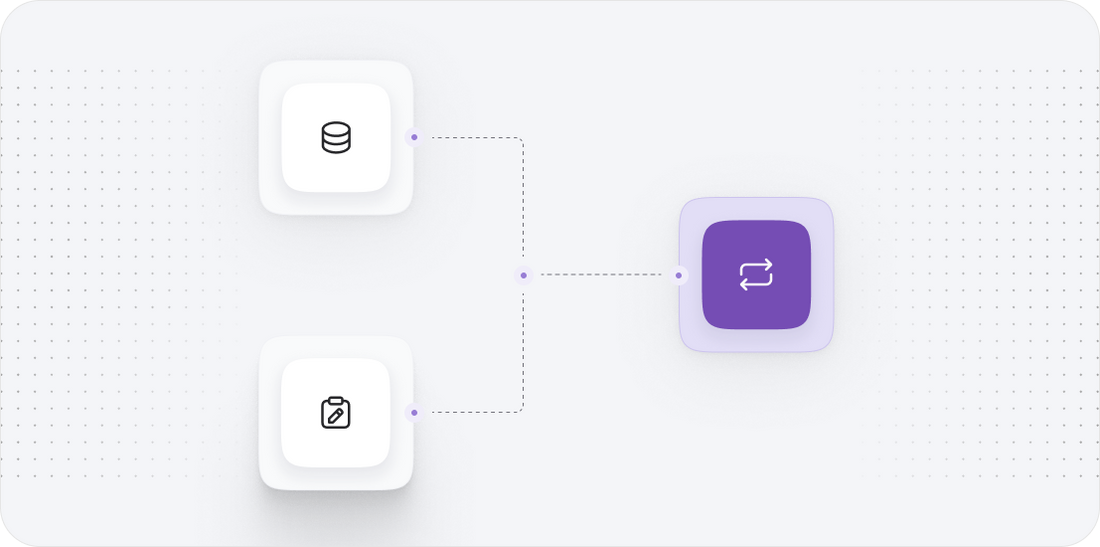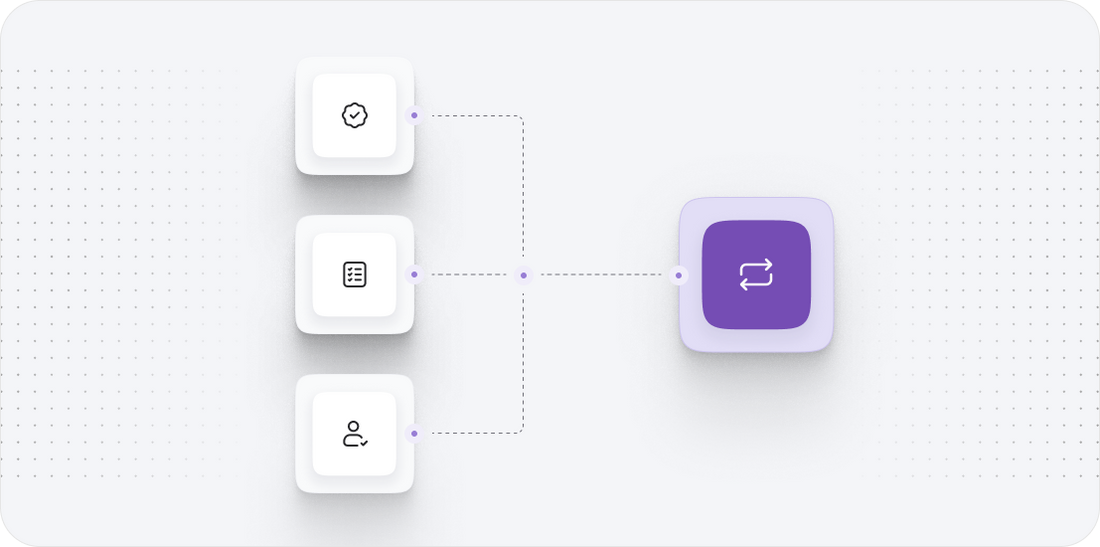





Sana commerce to Salesforce commerce cloud
Migrating your store from Sana commerce to Salesforce commerce cloud might seem daunting, but with proper planning and the right tools, it's a smooth process. Follow this step-by-step guide to ensure a successful transition.
Schedule a call
Step-by-Step Migration Guide: Sana Commerce to Salesforce Commerce Cloud migration guide
Step 1: Assessment of Current Ecommerce Setup
In this step, we will evaluate the existing Sana Commerce setup, identifying the key components that need to be migrated to Salesforce Commerce Cloud. This initial assessment is essential for ensuring a smooth transition and minimizing potential data loss.
Step 2: Data Backup and Security Measures
This step focuses on creating backups of all existing data on Sana Commerce and implementing security measures to protect sensitive information during the migration process.
Step 3: Migration of Data
In this step, we will migrate the backed-up data from Sana Commerce to Salesforce Commerce Cloud, ensuring that the data is correctly formatted and aligned with the new platform's requirements.
Step 4: Configuration of Salesforce Commerce Cloud
After migrating the data, we will configure the Salesforce Commerce Cloud environment, including setting up product categories, payment methods, and shipping options.
Step 5: Testing the New Environment
In this crucial step, we will thoroughly test the Salesforce Commerce Cloud setup to ensure all functionalities work as expected, including checkout processes and data integrity.
Step 6: Launching the New Storefront
After successful testing, we will prepare to launch the new Salesforce Commerce Cloud storefront, ensuring all team members are ready for the transition.
Step 7: Post-Launch Review and Optimization
In the final step, we will review the performance of the new storefront post-launch, making necessary adjustments and optimizations based on real-time data and customer feedback.
Power Your Step - Get in Touch
Ready to revolutionize your ecommerce experience? Contact PowerCommerce for expert migration support and take the next step towards seamless ecommerce growth.
Step 1: Assessment of Current Ecommerce Setup
Before initiating the migration process, we must conduct a comprehensive assessment of our current ecommerce setup on the Sana Commerce platform. This step is crucial as it allows us to identify the key components, including products, customer data, order history, and any custom functionalities, that need to be migrated to Salesforce Commerce Cloud.
The assessment phase involves several key actions:
- Inventory Analysis: Compile a complete list of products, including their attributes, pricing, and inventory levels. This ensures that we have an accurate reflection of what needs to be moved.
- Data Mapping: Develop a mapping strategy for how data from Sana Commerce will align with the data structure in Salesforce Commerce Cloud. This includes understanding how product categories, customer profiles, and order histories are organized in both platforms.
- Customization Review: Identify any custom integrations, features, or themes that are currently in use on Sana Commerce. Assess whether these customizations can be replicated on Salesforce Commerce Cloud or if new solutions are required.
- Compliance Check: Ensure that all data handling practices from Sana Commerce meet compliance standards for Salesforce Commerce Cloud, especially regarding customer data and privacy regulations.
By completing this assessment, we will be well-prepared for the subsequent migration steps, which will facilitate a seamless transition to the new platform.

Step 2: Data Backup and Security Measures
Data security and integrity are paramount during the migration process. In this step, we will establish a robust backup strategy to ensure that all data from our Sana Commerce platform is preserved before we proceed with the actual migration.
The key actions for this step include:
- Full Data Backup: Utilize the built-in backup tools provided by Sana Commerce to create a complete backup of our database, including products, customer information, order history, and configurations. Ensure that this backup is stored securely in a separate location.
- Verification of Backup Integrity: After creating the backup, verify that all necessary data has been captured and is accessible. This may involve checking the integrity of database files and ensuring that no data has been corrupted.
- Implement Security Protocols: Set up necessary security measures during the migration process. This includes using secure connections (such as HTTPS) for data transfers, employing encryption for sensitive data, and restricting access to authorized personnel only.
- Compliance Documentation: Document all security measures taken and ensure they align with compliance requirements for both Sana Commerce and Salesforce Commerce Cloud.
With the data securely backed up and safety protocols in place, we can confidently move to the next phase of our migration.

Step 3: Migration of Data
Now that we have secured our data through backups and implemented necessary security measures, we can proceed to the actual data migration. This step involves transferring all relevant data from Sana Commerce to Salesforce Commerce Cloud and requires careful attention to detail to ensure a smooth transition.
The migration process will include the following actions:
- Data Formatting: Prepare the data for migration by ensuring it complies with the data structure requirements of Salesforce Commerce Cloud. This may involve reformatting data fields, converting file types, and organizing data into the specified structure.
- Migration Tools: Utilize migration tools or services designed for transferring data between ecommerce platforms. These tools often facilitate the mapping of data fields from Sana Commerce to Salesforce Commerce Cloud, streamlining the process.
- Batch Migration: If the dataset is large, consider performing the migration in batches. This can reduce the risk of errors and allow for better monitoring of the migration process.
- Validation Checks: After migrating each batch, conduct validation checks to ensure that all data has been transferred accurately. This includes checking for missing data, verifying that product details are correct, and ensuring customer information is intact.
Once the data migration is complete and validated, we can proceed to configure our new Salesforce Commerce Cloud environment.

Step 4: Configuration of Salesforce Commerce Cloud
With our data successfully migrated to Salesforce Commerce Cloud, the next step is to configure the platform to align with our operational requirements. This involves setting up various aspects of the ecommerce environment to ensure it functions smoothly and meets our business needs.
The configuration process will involve the following key actions:
- Product Categories Setup: Organize the migrated products into appropriate categories and subcategories. This will enhance navigation on the site and improve the user experience for customers.
- Payment Gateway Integration: Configure payment methods by integrating with the desired payment gateways. Ensure that the chosen gateways are compatible with Salesforce Commerce Cloud and meet our transaction requirements.
- Shipping Options Configuration: Set up shipping methods and rates based on our shipping strategy. This includes integrating with third-party shipping solutions if necessary and ensuring that all shipping options are clearly communicated to customers.
- Design and Theme Customization: Customize the look and feel of our Salesforce Commerce Cloud storefront. This may involve applying existing themes or designing a new layout that reflects our brand identity.
Once the configuration is complete, we can proceed to test the functionalities of our new platform.

Step 5: Testing the New Environment
Testing is a vital phase in the migration process as it helps identify any issues before going live with our new Salesforce Commerce Cloud environment. This step ensures that all functionalities are working as intended and that our customers will have a seamless shopping experience.
The testing phase will consist of the following actions:
- Functional Testing: Test all functionalities including product browsing, adding items to the cart, and completing the checkout process. This ensures that all components of the ecommerce platform are operational.
- Data Integrity Verification: Check that all migrated data is accurate and complete. This includes verifying product details, customer profiles, and order histories to ensure everything has been transferred correctly.
- Performance Testing: Assess the loading times and performance of the new environment under various conditions. This helps identify any areas that may need optimization before launch.
- User Acceptance Testing (UAT): Involve a group of end-users to test the platform and provide feedback on their experience. This can highlight any usability concerns or bugs that may not have been caught during functional testing.
Once testing is completed and any issues resolved, we can prepare for the final steps of the migration process.

Step 6: Launching the New Storefront
After thorough testing and validation, we are ready to launch our new storefront on Salesforce Commerce Cloud. This is an exciting phase that requires careful planning to ensure a smooth transition for both our team and our customers.
The launch process will include the following actions:
- Final Review: Conduct a final review of all settings, configurations, and data to ensure everything is in order before launch.
- Team Training: Train our team members on how to use the new platform effectively. This includes familiarizing them with the new interface, features, and any new processes that may have changed.
- Go-Live Strategy: Develop a go-live strategy that outlines the steps for the transition. This may include a specific launch date and time, procedures for monitoring the site post-launch, and communication plans for customers.
- Customer Communication: Inform our customers about the upcoming changes and what to expect. This can involve sending out newsletters or announcements to keep them in the loop.
With all preparations in place, we can officially launch our new Salesforce Commerce Cloud storefront.

Step 7: Post-Launch Review and Optimization
Following the launch of our new storefront, it’s essential to monitor its performance closely and make any necessary adjustments. The post-launch phase is critical for ensuring that our ecommerce operations run smoothly and that we are meeting our customers' needs.
The actions for this step will include:
- Performance Monitoring: Continuously monitor the site for performance metrics such as loading times, conversion rates, and customer feedback. This data will help us identify any areas that may require improvement.
- Customer Feedback Gathering: Solicit feedback from customers regarding their shopping experience on the new platform. This can provide invaluable insights into usability issues or areas for enhancement.
- Ongoing Optimization: Based on the performance data and customer feedback, implement changes to optimize the platform. This could involve adjusting product listings, enhancing site navigation, or refining marketing strategies.
- Regular Updates and Maintenance: Establish a schedule for regular updates and maintenance to ensure the platform remains secure, up-to-date, and fully functional over time.
By focusing on continuous improvement in the post-launch phase, we can maximize the benefits of our new Salesforce Commerce Cloud storefront.

Power Your Step - Get in Touch
Your journey to a successful ecommerce migration starts with expert guidance. At PowerCommerce, we are dedicated to ensuring your transition from Sana Commerce to Salesforce Commerce Cloud is smooth, efficient, and tailored to your business needs.
Contact us today to power your ecommerce step:
- Visit our contact page to fill out our inquiry form.
- Call us at 800-099-9090 to speak with our migration experts directly.
- Email us at info@powercommerce.com for any questions or to schedule a consultation.
Let us help you unlock the full potential of your ecommerce strategy with our innovative solutions and dedicated support!
Stay aligned on what's happening in the commerce world
Trusted by 1000+ innovative companies worldwide
Schedule Your Migration Today
For businesses prioritizing simplicity, scalability, and robust support, Shopify is the clear winner.
Looking to migrate without hassle? Power Commerce can handle the entire process, ensuring smooth data transfer, store setup, and post-launch success.
Marka Marulića 2, Sarajevo, 71000 BiH
00387 60 345 5801
info@powercommerce.com


